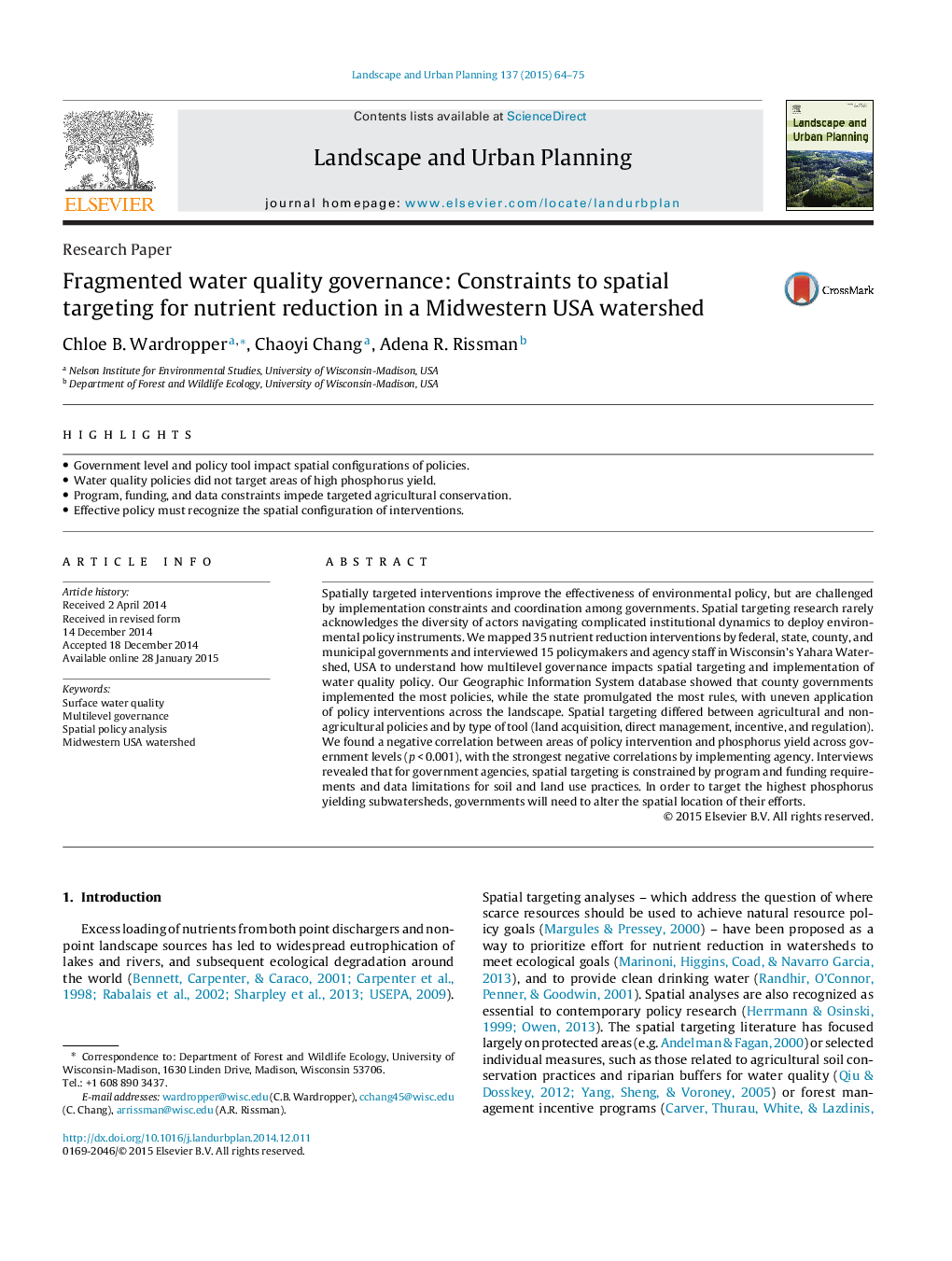| کد مقاله | کد نشریه | سال انتشار | مقاله انگلیسی | نسخه تمام متن |
|---|---|---|---|---|
| 1049176 | 1484621 | 2015 | 12 صفحه PDF | دانلود رایگان |
• Government level and policy tool impact spatial configurations of policies.
• Water quality policies did not target areas of high phosphorus yield.
• Program, funding, and data constraints impede targeted agricultural conservation.
• Effective policy must recognize the spatial configuration of interventions.
Spatially targeted interventions improve the effectiveness of environmental policy, but are challenged by implementation constraints and coordination among governments. Spatial targeting research rarely acknowledges the diversity of actors navigating complicated institutional dynamics to deploy environmental policy instruments. We mapped 35 nutrient reduction interventions by federal, state, county, and municipal governments and interviewed 15 policymakers and agency staff in Wisconsin's Yahara Watershed, USA to understand how multilevel governance impacts spatial targeting and implementation of water quality policy. Our Geographic Information System database showed that county governments implemented the most policies, while the state promulgated the most rules, with uneven application of policy interventions across the landscape. Spatial targeting differed between agricultural and non-agricultural policies and by type of tool (land acquisition, direct management, incentive, and regulation). We found a negative correlation between areas of policy intervention and phosphorus yield across government levels (p < 0.001), with the strongest negative correlations by implementing agency. Interviews revealed that for government agencies, spatial targeting is constrained by program and funding requirements and data limitations for soil and land use practices. In order to target the highest phosphorus yielding subwatersheds, governments will need to alter the spatial location of their efforts.
Journal: Landscape and Urban Planning - Volume 137, May 2015, Pages 64–75
